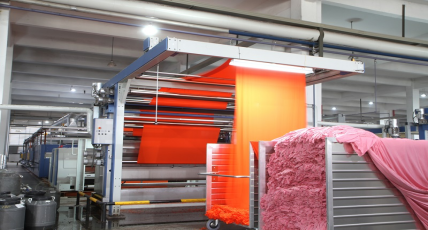Recommendations: Why use eco-friendly fabrics?
Eco-friendly fabrics are becoming increasingly important in today’s society, as people become more aware of how their actions affect the environment. The fashion industry, in particular, is starting to embrace eco-friendly fabrics, recognizing that fashion can be both stylish and sustainable. In this blog post, we’ll explore the benefits of eco-friendly fabrics and recommend some of the best-wrapped fabrics to use.
Whether you’re a fashion designer or a consumer, you can contribute to making the world a better place by using eco-friendly fabrics. There are many reasons why it’s important to use eco-friendly fabrics, including:
Reducing Environmental Impact – Eco-friendly fabrics are produced using sustainable methods that have a reduced impact on the environment. These methods use fewer resources, produce less waste and pollution, and help to conserve natural resources.
Health Benefits – Eco-friendly fabrics are often free from harmful chemicals that can cause skin irritation, rashes, and other health issues.
Durability – Eco-friendly fabrics are often more durable than traditional fabrics, due to their high-quality materials and construction methods. This means that they can withstand wear and tear over a longer period, reducing the frequency of replacing clothing.

Eco-friendly fabrics available now
Organic Cotton
Organic cotton is made from non-genetically modified cottonplants.lt is grown without the use of toxic pesticides andfertilizers, makingit an eco-friendly option. Organic cotton is agreat eco-friendly choice for sportswear. it’s grown without theuse of harsh chemicals or synthetic fertilizers, making it safe forthe environment and for the people who wear it. Organic cottonis soft, breathable, and perfect for activewear.

Recycled Polyester
This fabric is made from recycled plastic bottles, which aremelted down and spun into thread. Recycled polyester is aneco-friendly alternative to traditiona polvester that cancause harm to the environment. lt’s durable,moisturewicking, and quick-drying, making it perfect for sportswear.

Hemp – Hemp is another great eco-friendly fabric choice for sportswear. lt’s durable, moisture-wicking, and naturallvanti-bacterial, making it perfect for activewear. Hemp filbers are also incredibly strong and won’t lose shape over timemaking it a smart investment for sustainable sportswear.
Tencel – Tencel is a sustain able fabric made from eucalyptus trees, The production process uses fewer resources thantraditional cotton production, making it an eco-friendly option. Tencel is also soft, breathable, and moisture-wickingmaking it perfect for sportswear.
Conclusion – Eco-friendly fabrics are the future of sportswear. Thev’re made from sustainable, renewable materialsthat are kind to the environment, and they’re also functional and comfortable. so next time you’re shopping foractivewear, be sure to give eco-friendly fabrics a try – your body and the planet will thank you for it!
Bamboo – Bamboo fabric is also a great eco-friendly choice for sportswear. As we mentioned earlier, the bambooDlant is incredibly sustainable and reauires less water than traditional cotton, Bamboo fabric is also soft. moisturewicking, and perfect for sportswear









